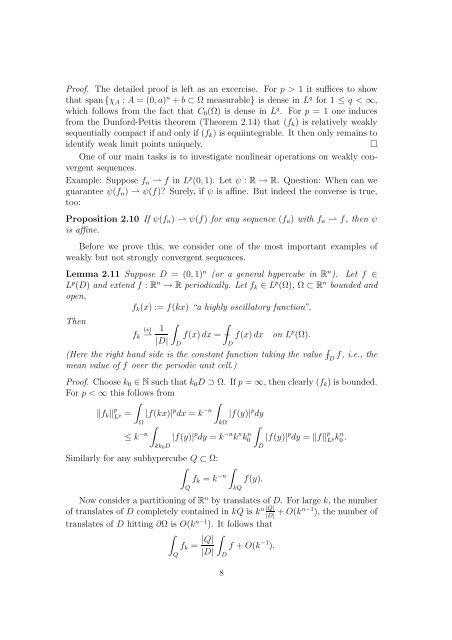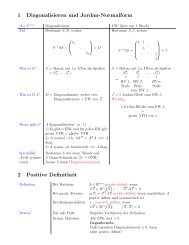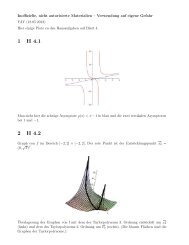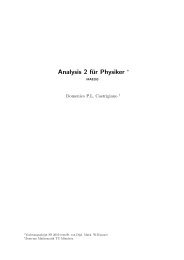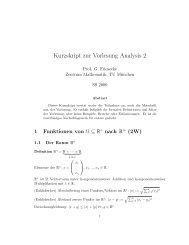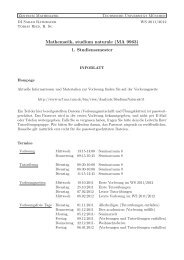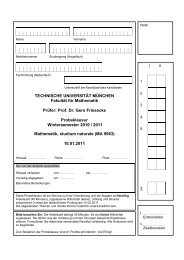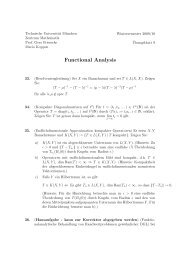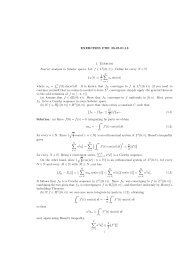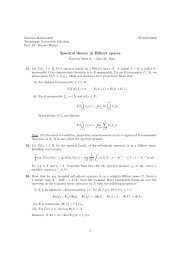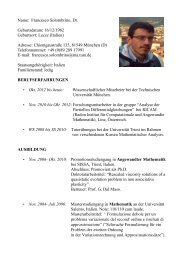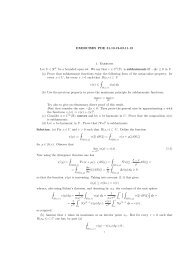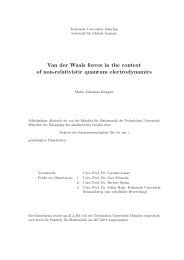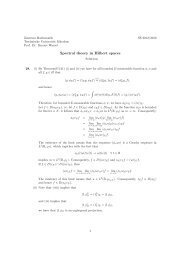Weak Convergence Methods for Nonlinear Partial Differential ...
Weak Convergence Methods for Nonlinear Partial Differential ...
Weak Convergence Methods for Nonlinear Partial Differential ...
Sie wollen auch ein ePaper? Erhöhen Sie die Reichweite Ihrer Titel.
YUMPU macht aus Druck-PDFs automatisch weboptimierte ePaper, die Google liebt.
Proof. The detailed proof is left as an excercise. For p > 1 it suffices to show<br />
that span {χ A : A = (0, a) n + b ⊂ Ω measurable} is dense in L q <strong>for</strong> 1 ≤ q < ∞,<br />
which follows from the fact that C 0 (Ω) is dense in L q . For p = 1 one induces<br />
from the Dun<strong>for</strong>d-Pettis theorem (Theorem 2.14) that (f k ) is relatively weakly<br />
sequentially compact if and only if (f k ) is equiintegrable. It then only remains to<br />
identify weak limit points uniquely.<br />
□<br />
One of our main tasks is to investigate nonlinear operations on weakly convergent<br />
sequences.<br />
Example: Suppose f n ⇀ f in L p (0, 1). Let ψ : R → R. Question: When can we<br />
guarantee ψ(f n ) ⇀ ψ(f)? Surely, if ψ is affine. But indeed the converse is true,<br />
too:<br />
Proposition 2.10 If ψ(f n ) ⇀ ψ(f) <strong>for</strong> any sequence (f n ) with f n ⇀ f, then ψ<br />
is affine.<br />
Be<strong>for</strong>e we prove this, we consider one of the most important examples of<br />
weakly but not strongly convergent sequences.<br />
Lemma 2.11 Suppose D = (0, 1) n (or a general hypercube in R n ). Let f ∈<br />
L p (D) and extend f : R n → R periodically. Let f k ∈ L p (Ω), Ω ⊂ R n bounded and<br />
open,<br />
f k (x) := f(kx) “a highly oscillatory function”.<br />
Then<br />
(∗)<br />
f k ⇀ 1 ∫ ∫<br />
f(x) dx = − f(x) dx on L p (Ω).<br />
|D| D<br />
D<br />
∫<br />
(Here the right hand side is the constant function taking the value −<br />
mean value of f over the periodic unit cell.)<br />
D<br />
f, i.e., the<br />
Proof. Choose k 0 ∈ N such that k 0 D ⊃ Ω. If p = ∞, then clearly (f k ) is bounded.<br />
For p < ∞ this follows from<br />
∫<br />
∫<br />
‖f k ‖ p L = |f(kx)| p dx = k −n |f(y)| p dy<br />
p<br />
Ω<br />
∫<br />
kΩ<br />
∫<br />
≤ k −n |f(y)| p dy = k −n k n k0<br />
n |f(y)| p dy = ‖f‖ p L<br />
k n p 0 .<br />
kk 0 D<br />
Similarly <strong>for</strong> any subhypercube Q ⊂ Ω:<br />
∫ ∫<br />
f k = k −n<br />
Q<br />
kQ<br />
D<br />
f(y).<br />
Now consider a partitioning of R n by translates of D. For large k, the number<br />
of translates of D completely contained in kQ is k n |Q|<br />
+ |D| O(kn−1 ), the number of<br />
translates of D hitting ∂Ω is O(k n−1 ). It follows that<br />
∫<br />
f k = |Q| ∫<br />
f + O(k −1 ).<br />
|D|<br />
Q<br />
D<br />
8


